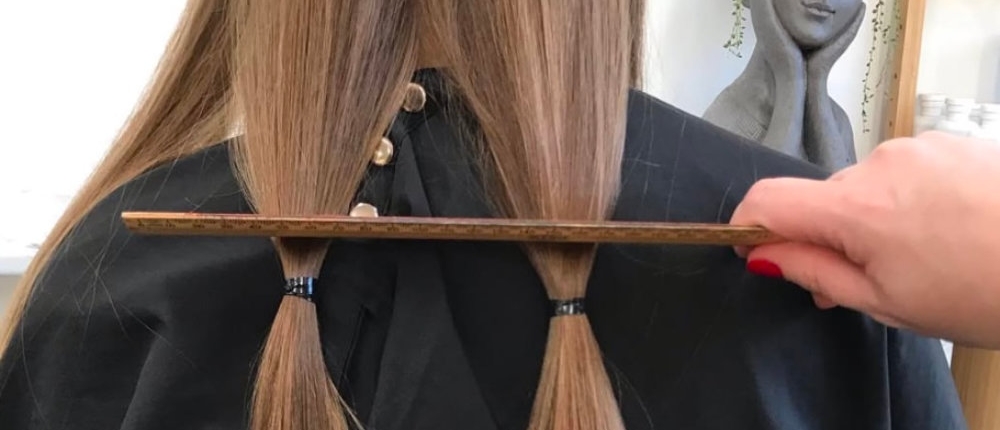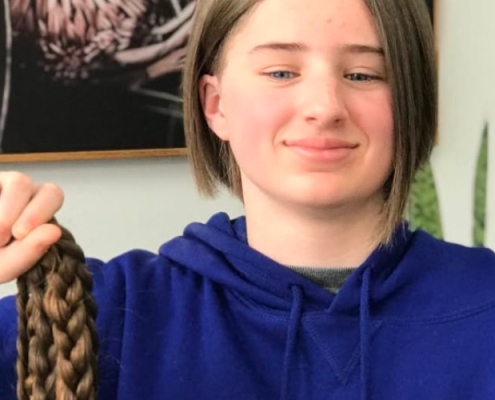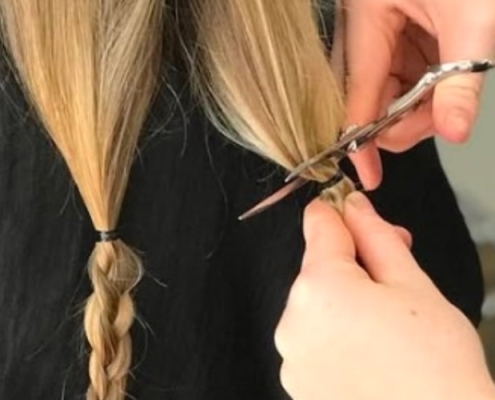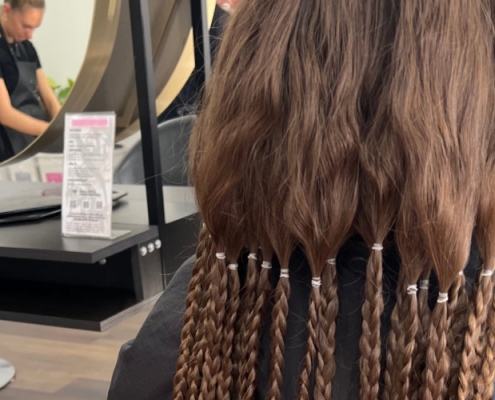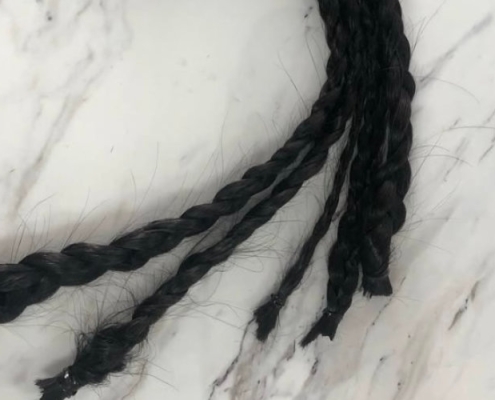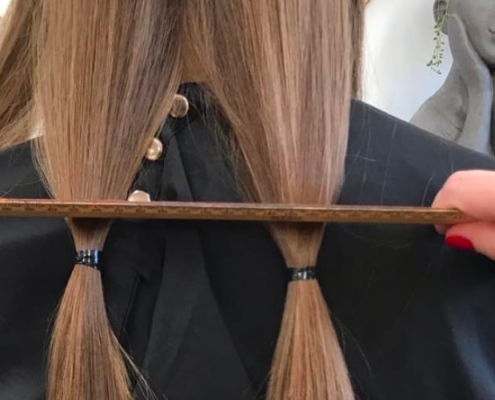Who Can Donate Hair? Requirements and Guidelines
Donating your ponytail is a generous act that can help individuals experiencing hair loss due to medical conditions such as cancer or alopecia. However, not all hair is eligible for donation, and different organisations have specific requirements regarding length, condition, and treatments. Understanding these guidelines ensures that your donation can be used effectively to create a high-quality wig.
This guide covers the essential requirements for donating hair and answers common questions about who can donate.
Minimum Hair Length for Donation
One of the most important factors when donating hair is its length. Charities require a minimum ponytail length to ensure there is enough usable hair for wig-making.
- Standard minimum length: Most organisations require at least 20 cm to 35 cm of hair.
- Why length matters: Hair is trimmed and processed before being sewn into a wig, so shorter donations may not be sufficient.
- How to measure: Hair length should be measured from the elastic band at the base of the ponytail to the tip of the longest strands.
For advice on growing your hair to the required length while maintaining its health, read our guide: Growing Your Hair for Donation: Tips for Healthy Growth.
Hair Condition: What Type of Hair Can Be Donated?
Most charities only accept hair that meets specific quality standards to ensure durability and usability. Here are the general conditions your hair must meet:
- Hair must be clean and dry – Damp or wet hair can develop mould and become unsuitable for use.
- No excessive split ends – Severely damaged or frayed hair may be unusable.
- Hair must be free from lice – Any hair with lice or eggs cannot be accepted.
- Natural texture is accepted – Straight, wavy, and curly hair can all be donated.
Can Coloured, Treated, or Grey Hair Be Donated?
There is often confusion about whether coloured, chemically treated, or grey hair can be donated. Different organisations have different policies regarding these types of hair:
1. Coloured Hair
- Some charities accept coloured hair, while others do not.
- Permanent, semi-permanent, and henna-coloured hair may be eligible depending on the charity.
- Bleached hair is usually not accepted due to its weakened structure.
2. Chemically Treated Hair (Permed or Relaxed)
- Most charities prefer untreated hair, but some may accept permed or chemically straightened hair if it is in good condition.
- If your hair has undergone multiple treatments, check with the organisation before donating.
3. Grey Hair
- Some charities accept grey hair, while others do not.
- Since grey hair can be coarser and more brittle, it may not be suitable for all wig-making processes.
To confirm whether your hair qualifies, check with your chosen organisation before donating.
Who Can Donate? Age and Health Considerations
Most hair donation organisations accept hair from individuals of all ages. However, there are a few considerations:
- Children and adults can both donate hair.
- Donors should be in good overall hair health, meaning no excessive thinning or breakage.
- If you have a medical condition affecting hair growth, consult your hairdresser to ensure your donation meets the guidelines.
How Is Donated Hair Used?
After hair is donated, it undergoes a process to be cleaned, treated, and woven into wigs for individuals experiencing hair loss. Charities sort hair by colour, texture, and length before crafting custom wigs.
To learn more about how donated hair is transformed into wigs, visit: What Happens to Your Hair After You Donate It?.
What If Your Hair Doesn’t Meet the Requirements?
If your hair doesn’t meet the donation requirements, there are still other ways to help:
- Financial donations: Many wig-making charities accept monetary contributions to help cover the costs of creating and distributing wigs.
- Volunteering: Some organisations need assistance with fundraising or awareness campaigns.
- Growing your hair for a future donation: If your hair is too short now, consider growing it out while following a healthy haircare routine.
Final Steps: Booking Your Donation Appointment
Once you’ve confirmed your hair meets the requirements, the next step is to visit a professional hairdresser for your donation cut. They will ensure the hair is cut correctly, secured, and sent to the appropriate organisation.
If you’re ready to donate, visit our service page to learn more: Ponytail Donations.
Final Thoughts
Hair donation is a simple but impactful way to support individuals experiencing medical hair loss. By following these guidelines and ensuring your hair meets the necessary requirements, you can make a valuable contribution that helps change lives.
Still unsure if your hair qualifies? Talk to your hairdresser or check with your preferred donation organisation for the most up-to-date requirements.

